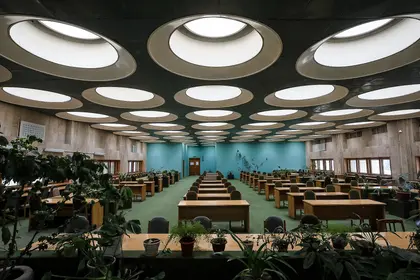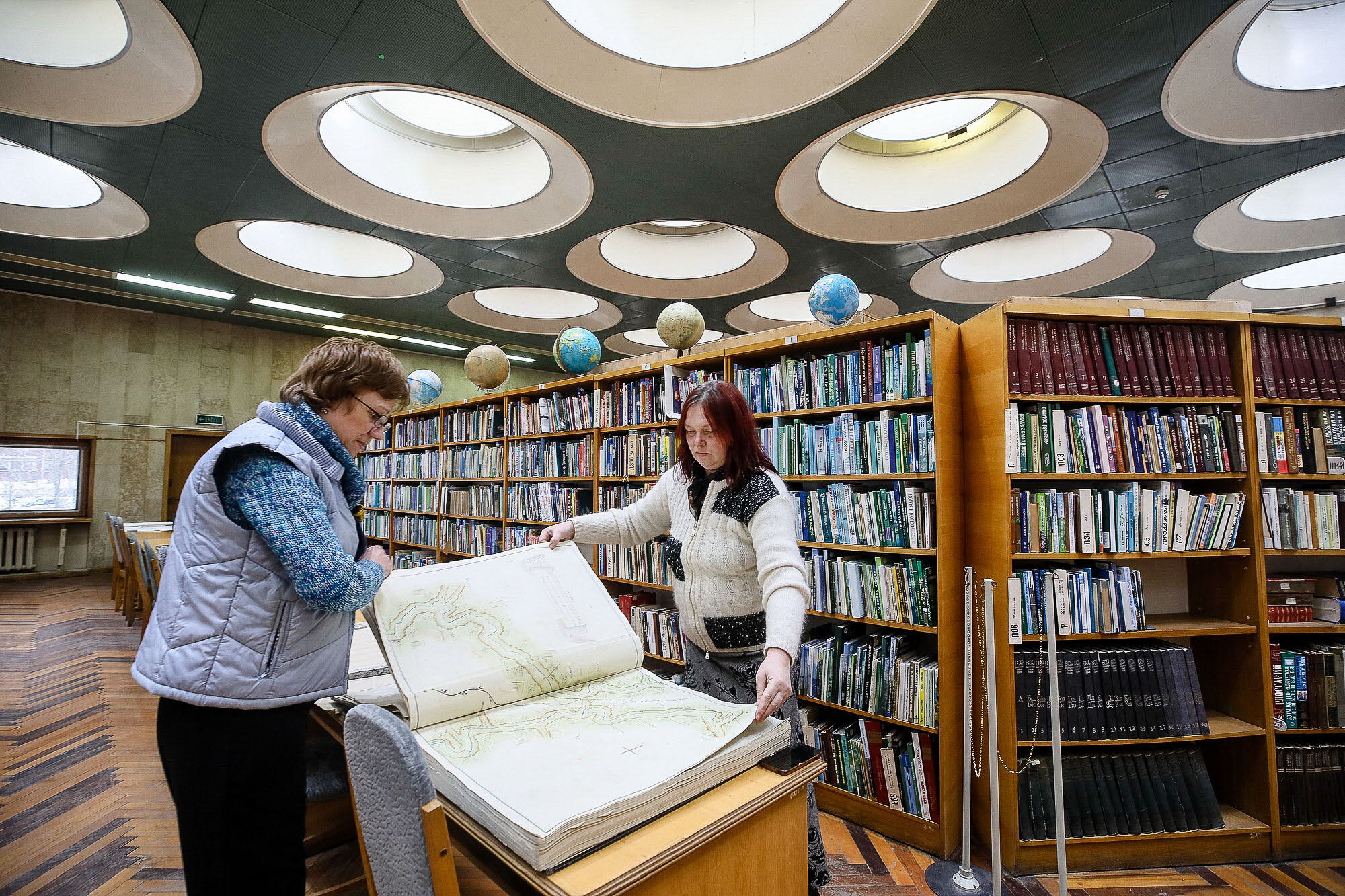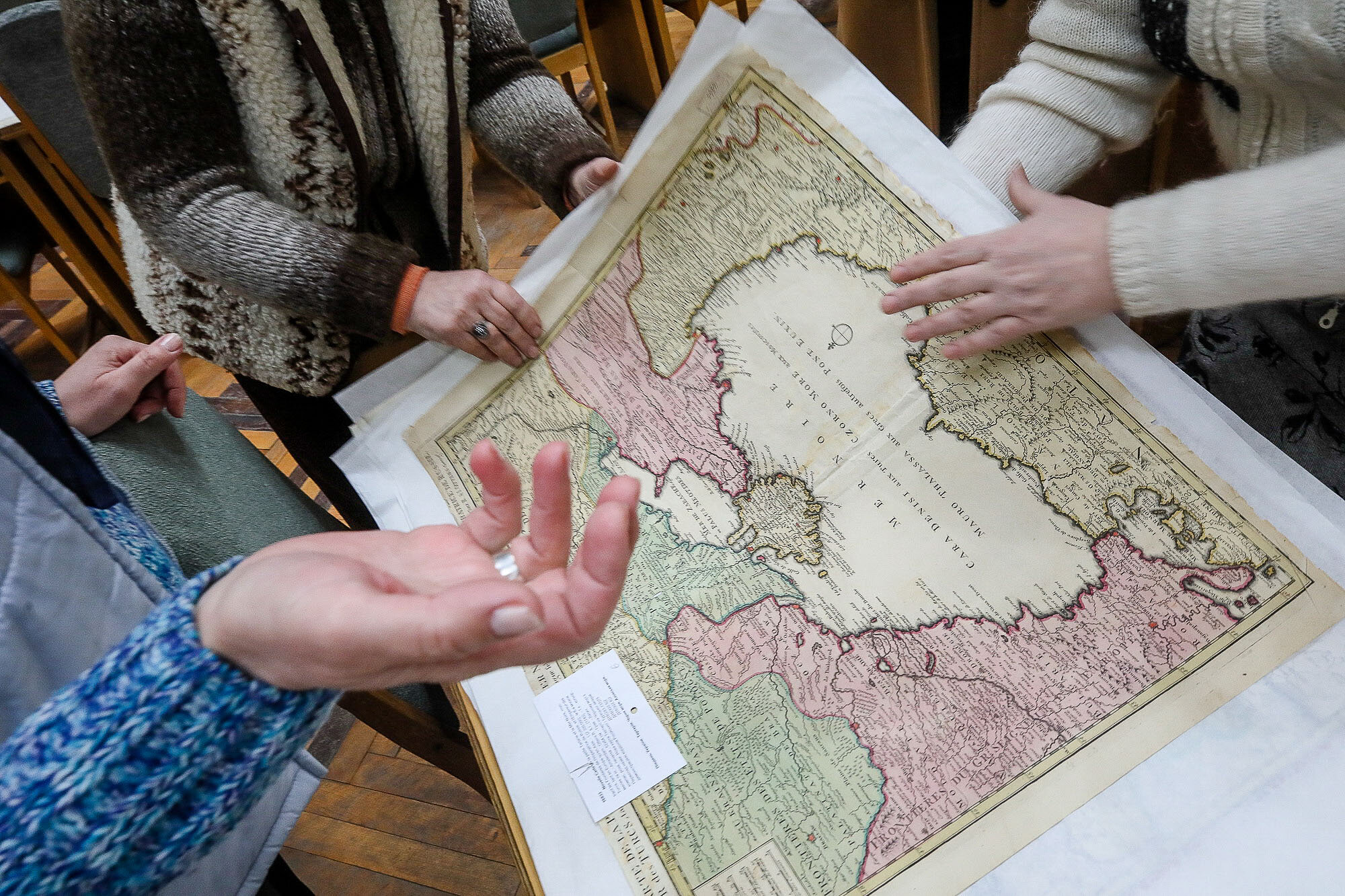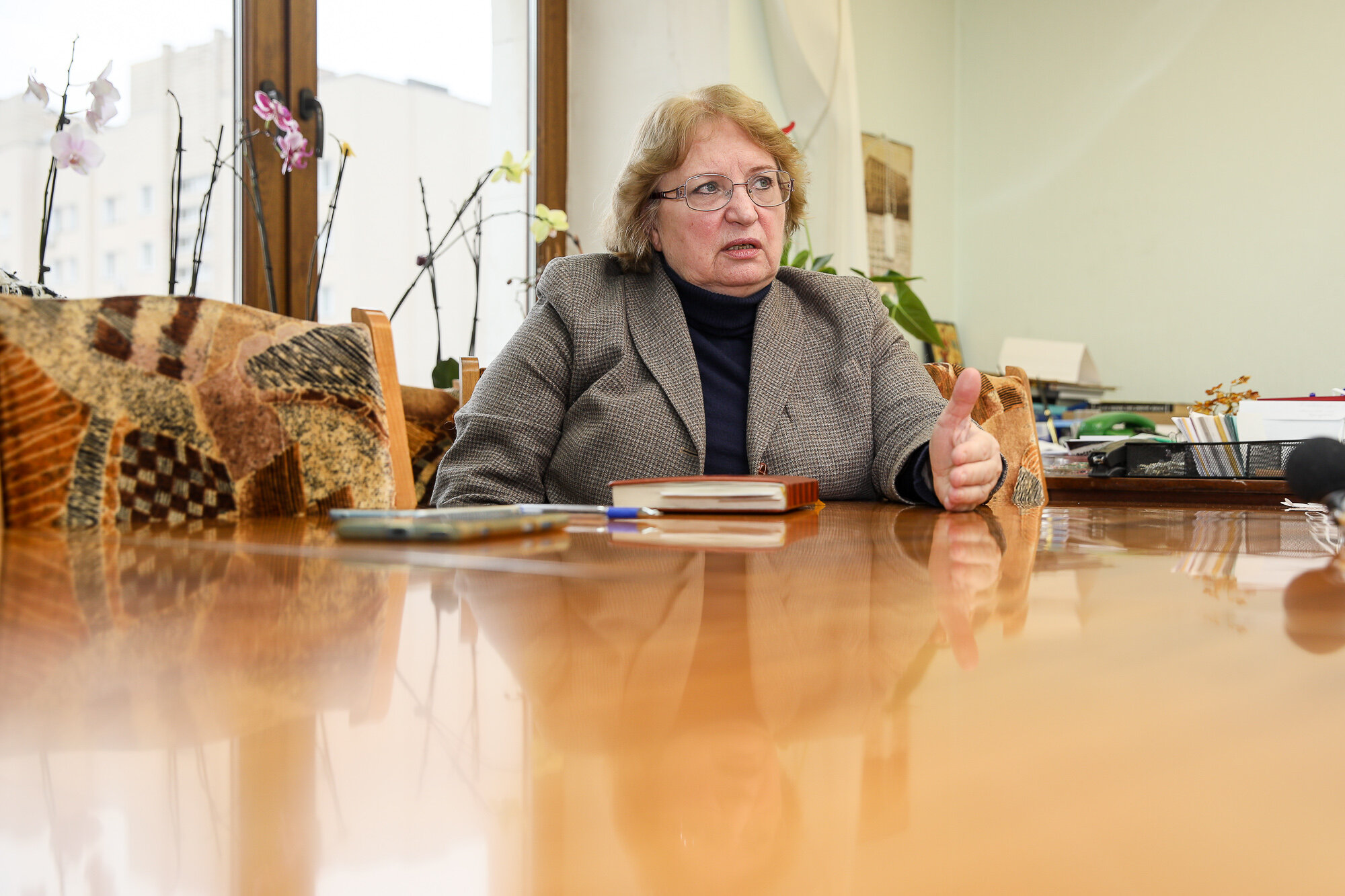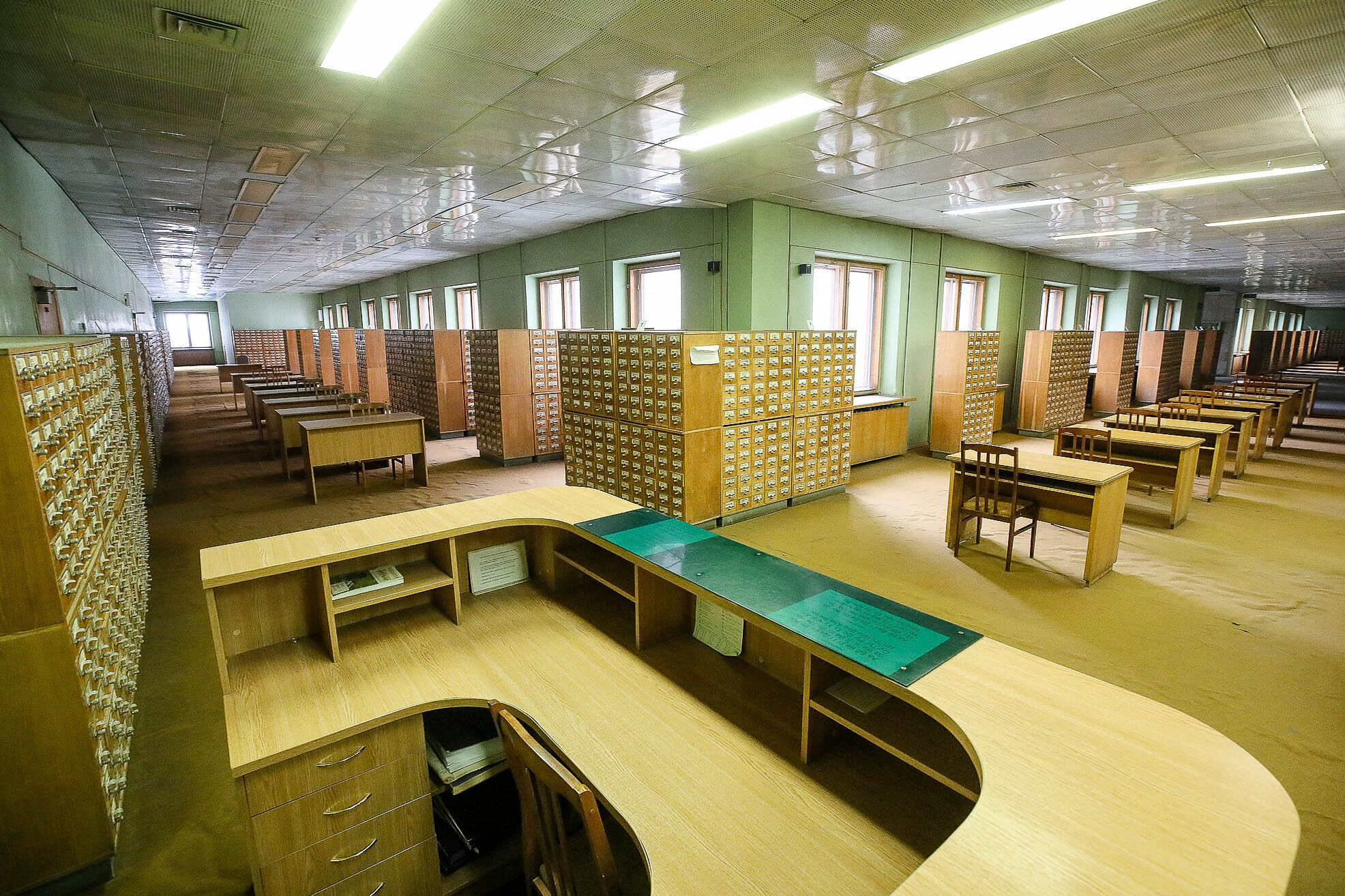The main building of the Vernadsky National Library is one of Kyiv’s most recognizable modernist structures.
It’s been standing tall since 1989 and has experienced a revival in recent years as a popular location for music video production.
JOIN US ON TELEGRAM
Follow our coverage of the war on the @Kyivpost_official.
But the architectural heritage has always been secondary to this institution, which has the biggest collection of items in Ukraine and serves as its main academic library and main scientific information center.
“The primary purpose is protecting our books,” Lyubov Dubrovina, the director of the Vernadsky Library, told the Kyiv Post.
Since its original founding in 1918, the library has been through a lot. It has been censored during the Soviet Union and closed to the public during the pandemic.
“We’ve lived through revolutions, wars and famines,” Dubrovina says. “The library has seen it all.”
Though there’s no external threat now, the state institution is on the verge of crumbling with decaying buildings and no funds for renovation.

Protecting archives
The library has been promoting scientific inquiry and protecting culture since its foundation more than a century ago by Ukraine’s Hetman Pavlo Skoropadskyi. Scientist Volodymyr Vernadsky, whom the library was named after when the newest building opened in 1989, created the library’s first provisional committee shortly after its founding.
As the largest library in Ukraine, and the 20th largest library in the world, it contains more than 15 million items.
The earliest collection, ancient Slavic scripture, dates as far back as the 11th century, although it also houses some cuneiform texts from 3000 B. C. This heritage is much older than the items usually found in European libraries that store archives from the 17–18th century.
The rare collection also includes incunabula texts; items from the 15th century with the library’s oldest “Treatise” by Matthew Krakowsky published in Germany around 1460; over 2,500 types of paleotypes (from the first half of the 16th century); publications from the most famous European publishing firms of the 16–18th centuries; and antique Latin script.
There are rare and valuable editions from the 19–20th centuries as well, including classics of Ukrainian literature by Ivan Kotlyarevsky, Taras Shevchenko, Marko Vovchok, Nikolai Gogol, Borys Hrinchenko, Olha Kobylianska and many more.
“I am proud of the library and what we protect,” says Dubrovina, who has been working at the institution for nearly 40 years and heading it since 2018.
The oldest and most delicate collections are stored in the older building located on Volodymyrska Street in downtown Kyiv. The building is kept at 18 degrees Celsius and below 50% humidity to maintain a perfect environment for its artifacts.
High humidity would risk inviting mold, damaging the ancient texts. The library has an entire rapid response department, the Center of Conservation and Restoration, dedicated to preventing such crises.
A much bigger threat than mold was the Soviet censorship. Back in the days of totalitarianism, certain cultural artifacts not aligning with the state’s narrative were ordered to be destroyed. But the Vernadsky Library had always followed a greater purpose than blindly serving the authorities.
“They saved everything throughout the years,” Dubrovina says. “When Ukraine became independent, we were able to show what cultural history we had been protecting secretly.”
In fact, one of the library’s priorities is to specifically promote the history and literature of repressed people throughout time.
“It’s important to preserve all history, no matter what bias whichever governing power may have,” Dubrovina says. “Learning your nation’s history grounds you. To fully know oneself you must gain knowledge in life, your history, your people’s and country’s history.”
Serving people
One of the other main reasons the library is so vital to Ukraine is its research support.
As the main scientific information center in Ukraine, the library is a place for all academics and scientists to study and research. All academic institutions of Ukraine have archives in the library.
The books and resources used to only be loaned to doctorate candidates and fellow academics but that has changed and anyone is now able to rent the items.
The library normally receives around 260,000 visitors a year. The peak number of visitors using the reading room was around 2,000 people a day in 1989. Since 2010, the amount of visitors in the reading room has dropped significantly because of the increased use of resources online.
The age of the internet has not harmed the library’s functions. In fact, its website and online catalogue receive 90,000 visits a day, with an average of 20,000 downloads.
Though primary, providing resources isn’t the only service the library offers. The institution has been shifting to become a cultural attraction. It gives tours focused on architecture or its scientific or cultural capabilities. It also holds art events and exhibitions.
It is now preparing an international art exhibition about the Danube River that is set to open after the pandemic restrictions are lifted.
“There are so many things we provide when there isn’t quarantine,” Antonina Sheremet, the head of the department of socio-cultural activities, told the Kyiv Post.
However, the library managed to remind the public of itself during quarantine by promoting Ukrainian culture. Its building was one of the settings for the Zmova live music series that has informed thousands of viewers about historical locations in need of funding by filming sessions in them. Kharkiv rapper Kurgan performed in one of the library’s reading rooms.
The library has enjoyed attention from foreign musicians and was promoted through a number of music videos shot inside its main building by U. K. Paloma Faith, Paolo Nutini, Zayn and Korean boy band NCT.
But the institution is now planning to release a promotional video to reach the local audience and showcase what it offers.
Empty crumbling halls
Revolutions, wars, famines — now a global pandemic has been added to the list of what the library has seen.
The institution was forced to close its reading rooms to the public during the quarantine. Its huge halls feel especially empty now.
“After all, it’s the intellect humans bring that enriches this place,” Sheremeta says.
The library hopes to reopen by March 31 but in the meantime, the pandemic is a huge burden.
With 27 floors and an area of 35,700 square meters, the main building has many bathrooms that need to be sanitized every 3 hours, adding expenses to its tight budget.
And while the library’s management is optimistic about surviving the pandemic, its further future may not be as certain. The building desperately needs a renovation that is estimated at more than $40 million — a sum it has no means to raise.
Though the rooms with books and ancient maps have been preserved as best they can, some other parts of the building are falling apart. Some of the thin old wooden floor and ceiling haven’t been renovated in decades. The roof is in poor shape. The bathrooms on the basement floor have a bit of a reputation, having not been renovated since 1989.
Several presidents and administrations gave empty promises of supporting the library, but they never came through in the end. Incumbent President Volodymyr Zelensky promised to allocate funding for the library after touring the building and even provided that promise in writing.
“The library is in dire need of financial support,” Dubrovina says. “So we are now waiting.”
You can also highlight the text and press Ctrl + Enter


